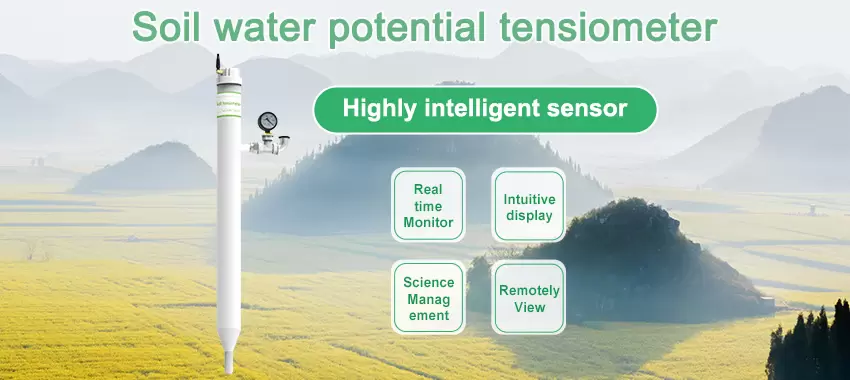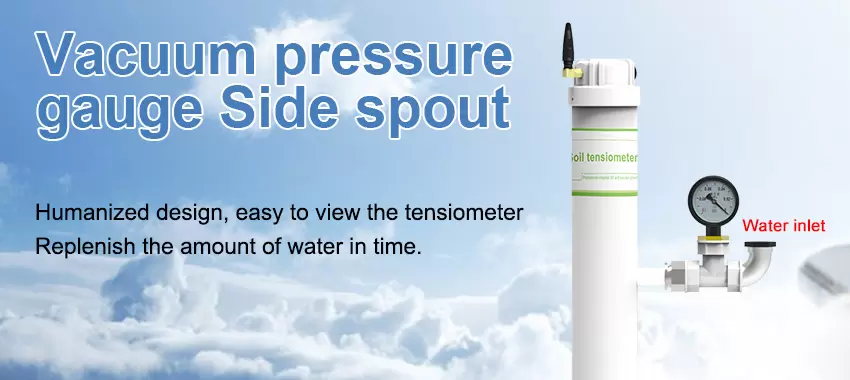Summary:
Our goal is to recommend the right soil sensor for your application and provide you with tools to make the right decision. We’re delving into the most asked questions. How does the soil moisture sensor work, and what is the difference between point and profile measurements?
Soil moisture sensor measures the water content in the soil and can be used to estimate the amount of stored water in the soil horizon. Soil moisture sensor does not measure water in the soil directly. Instead, they measure changes in some other soil property that is related to water content in a predictable way. Each sensor manufacturer uses different technologies to measure soil moisture content; for a detailed explanation of all the different types, we recommend reading about the various technologies here.
For a soil sensor to work, no matter the type, it must make contact with the soil. The highest accuracy will be obtained when soil sensors is entirely surrounded by the soil, with no gaps between the probe and the soil.

Product Introduction:
Our Soil Water Potential Tensiometer utilize Time Domain Transmissometry or TDT technology to measure moisture content. Providing some background, TDT measures the time taken for an electromagnetic wave to propagate (travel) along a given length of a transmission line in the soil. The higher the moisture content surrounding the probe, the slower the signal travels. TDT sensors generally provide greater accuracy and lower power consumption than TDR sensors. The other advantage over the other methods comes down to the bandwidth of the measurement. TDT has a higher bandwidth than other methods like Frequency Domain Reflectance, making it less susceptible to the interference that affects capacitance.
Another critical difference between soil moisture sensor types is the probe geometry and whether it measures a single point, multiple points, or continuously along the entire length of the probe. Point measurements are single-point soil moisture sensors, which means they measure a single location and depth.
Soil moisture profiling probes measure moisture content across a vertical soil profile, typically spanning a range of 30cm to 120cm. Most usually consist of multiple single-point sensors housed within an elongated enclosure; this type of geometry allows for several points to be installed quickly and at one time. However, the Profile features modular segments that form a single antenna allowing for continuous measurements across the entire length, giving a true soil moisture profile.

Product advantages:
The chief advantage of using a soil moisture profiling probe is the elimination of the cost of multiple single-point sensors and the need to excavate and bury them at the appropriate depths. To install most profiling probes, either plastic or PVC access tubes need to be inserted before the sensor can be. This design imposes uncertainties, and in some cases, there tends to be a preferential flow between the access tube and the sensor. Soil moisture probes like the Soil Water Potential Tensiometer, which don’t require an access tube, will typically provide greater accuracy for this reason.
Single point measurements are single-point sensors, which means they measure a single location and depth. To achieve soil moisture profile measurements, multiple sensors are installed each at different depths. Multi-point profiling probes consist of multiple single-point sensors housed within an elongated enclosure. This type of geometry allows for several points to be installed quickly and at the same time. True moisture profile have multiple sensing elements (antennas) that allow for continuous measurement across the entire length of the probe, not just at a single point on the sensor. Only true profile probes provide a complete soil moisture profile.
Installation:
Excavation is usually required to create a large enough hole for installing each sensors. This can greatly disrupt the soil and plants in the visinity. Generally, uses power boring tool. In some cases, a vertical access tube us inserted in the bore hole. Usually installed using a pilot rod; in some cases, a boring tool may be used.
If you have any questions, do not hesitate to contact jxiotdz@gmail.com at any time, we would be happy to schedule a time to speak directly with you. If you have a question that you would like answered, submit it here.